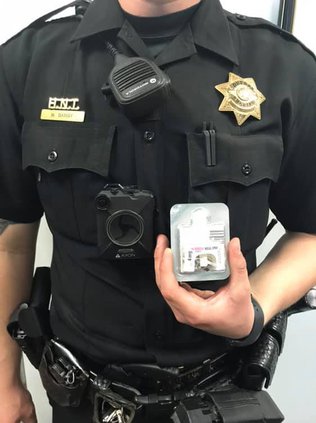The San Joaquin County Sheriff’s Office is the latest local law enforcement agency to train its officers to carry and administer the life-saving drug naloxone.
With exposure to the deadly opiate substance fentanyl on the rise, and the number of overdoses continuing to climb, the agency recently partnered up with San Joaquin County Emergency Medical Services to train deputies on the proper administration of the medication, which binds to the receptors in the brain that process the effects of opiates and prevents them from working.
In the event that somebody has overdosed and is in respiratory distress – one of the deadly symptoms of overdose – the naloxone counteracts the effects of the drugs and potentially saves the life of the person being treated.
And the availability of the medication as part of standard protocol for first responders is expanding across the country as agencies deal with the effects of the worsening opiate crisis that now claims more lives than automobiles.
After the French Camp-McKinley Fire District carried out a pilot program that put the drugs into the hands of firefighters and EMTs, it was the Lathrop Manteca Fire District that further expanded the use of the new tool and deployed the medication in 16 different cases the first year that they were authorized to carry it.
Earlier this year the Ripon Police Department sent its officers for training so that they would be authorized to dispense the medication – which is about the size of a deck of playing cards and can be carried in the breast pocket of a typical uniform – if they came across somebody that was in respiratory distress as a byproduct of a drug overdose.
The emergence of fentanyl – a narcotic painkiller that can be up to 100 times stronger than morphine – as an additive in common street drugs like heroin and cocaine has only further compounded the need for an additional line of defense.
But the changes in who can administer naloxone also benefits the first responders as well.
Because the availability of fentanyl and fentanyl analogs continues to rise, that means more police offices and EMS workers are coming into contact with the substance – which can be deadly in trace amounts. By arming those who aim to save lives with a lifesaving tool of their own in case the substance is accidentally ingested – it can be especially dangerous in powder form, where tiny grains can be inhaled – it gives those in the field a layer of protection that they didn’t previously have.
The frequency of encounter with fentanyl has become so great that many law enforcement agencies are switching to black latex gloves so that tiny grains of the substance will be evident to the naked eye as a way to prevent accidental exposure.
As of late last year, there are thousands of law enforcement agencies across the country that are having officers carry naloxone – also known by trade name Narcan – as a tool to help fight the worsening opiate crisis that continues to kill a record number of people in America every year. By expanding the scope of practice of first responders, local EMS authorities that grant permission ensure that somebody who needs the medication in order to save their life can get it rather than waiting for a paramedic, which is what happened before these practices went into effect.
Officers and firefighters that are authorized to carry the medication are required to undergo specialized training to teach them when and how to administer it.
The San Joaquin County Sheriff’s Office – which is responsible for patrolling all of the unincorporated areas in the county, as well as incorporated areas that are operating under contract – is the largest law enforcement agency in the county.
To contact reporter Jason Campbell email jcampbell@mantecabulletin.com or call 209.249.3544.





